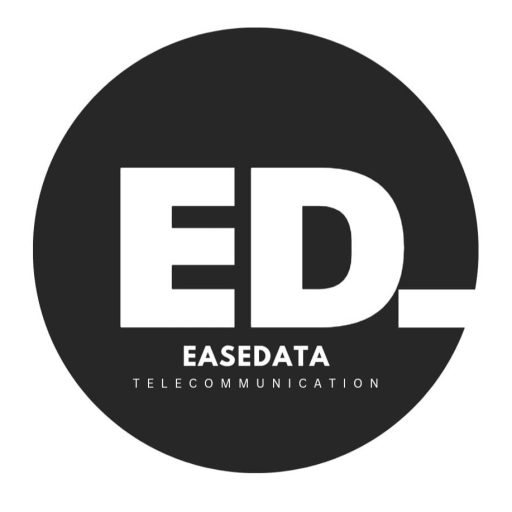Step-by-Step Tech Tutorials to Transform Your Digital Skills Overnight For Nigerian Youths
Unlock Your Potential with Easy-to-Follow Tutorials for Boosting Your Digital Proficiency

Introduction
In today’s rapidly evolving world, digital skills are no longer a luxury, they are a necessity, especially for Nigerian youths who are poised to lead the charge in shaping the nation’s future. Whether you’re looking to launch a business, secure a high-demand job, or expand your influence in the creative or tech industries, mastering digital skills is the key to unlocking limitless opportunities.
Nigeria boasts a young, dynamic population that is brimming with potential. However, many youths struggle with accessing the right resources or knowing where to start in their journey to becoming digitally savvy. This is where this guide comes in. With “Step-by-Step Tech Tutorials to Transform Your Digital Skills Overnight,” we aim to bridge the gap by providing practical, easy-to-follow tutorials tailored to help Nigerian youths tap into the power of technology and thrive in today’s digital economy.
From understanding the basics of productivity tools and navigating creative platforms to learning the fundamentals of coding and enhancing cybersecurity, this guide covers everything you need to build a strong digital foundation. You’ll also discover how to create personal brands online, an invaluable skill for entrepreneurs, freelancers, and job seekers alike in Nigeria’s fast-growing digital marketplace.
The opportunities are vast becoming a YouTuber, building a career in tech, starting an e-commerce business, or even freelancing for global clients all of which are within your reach with the right skills. Our step-by-step approach ensures that no matter your starting point, you can quickly and confidently transform your digital knowledge into practical, real-world applications.
It’s time for Nigerian youths to harness the power of technology and claim their place in the global digital space. Let’s get started on this journey to transforming your digital skills overnight!
Why Digital Skills Are Essential in Today’s World
In today’s technology-driven world, digital skills have become a cornerstone for success. For Nigerian youths, mastering digital tools and platforms is not just an advantage it’s a necessity. Whether it’s excelling in academics, launching a business, or breaking into the global job market, digital skills open doors to countless opportunities.
Personal Growth: Digital skills empower individuals to learn, communicate, and stay informed. Nigerian youths can access free online courses, tutorials, and resources that were once out of reach, enabling them to improve themselves and acquire valuable knowledge. From learning a new language to mastering graphic design or coding, technology serves as a personal growth accelerator.
Career Advancement: The job market in Nigeria and beyond increasingly demands tech-savvy candidates. Employers are seeking individuals who can use tools like Microsoft Office, manage social media accounts, analyze data, or even write basic code. With digital proficiency, Nigerian youths can stand out, secure better-paying jobs, and even work remotely for international clients, breaking geographical barriers.
Daily Life: Beyond professional benefits, digital skills make everyday tasks easier. Whether it’s paying bills online, shopping on e-commerce platforms, or staying connected with family and friends through social media, technology simplifies life. For entrepreneurs and small business owners, knowing how to market products online or create engaging content can mean the difference between thriving and struggling.
In a country like Nigeria, with its youthful population and growing tech sector, digital literacy is a game-changer. It not only fosters independence but also equips young people to compete on a global scale. By developing these essential skills, Nigerian youths can take control of their future, contributing to the country’s development while achieving their personal goals.
How to Assess Your Current Tech Proficiency
Before embarking on your journey to enhance your digital skills, it’s important to understand where you currently stand. Assessing your tech proficiency helps you identify your strengths and weaknesses, allowing you to focus on areas that need improvement. Here’s a step-by-step guide for Nigerian youths to evaluate their current level of digital expertise:
1. Reflect on Your Daily Tech Usage
Start by analyzing how you interact with technology in your daily life. Ask yourself:
- Do I use email, messaging apps, or social media effectively?
- Can I navigate the internet to find reliable information?
- Am I comfortable with basic computer tasks like typing, saving files, or using productivity software?
2. Identify the Tools You’re Familiar With
List out the software, apps, and devices you know how to use. These could include tools like Microsoft Word, Excel, Canva, or photo editing apps. This will give you a clear picture of your existing capabilities.
3. Test Yourself with Simple Tech Challenges
Challenge yourself with basic tasks, such as:
- Creating a professional email.
- Designing a simple poster with a tool like Canva.
- Writing a formula in Excel or Google Sheets.
If you struggle with these tasks, it highlights areas to improve.
4. Take Online Tech Proficiency Quizzes
There are free quizzes and self-assessments available online that can evaluate your skill level in areas like coding, digital marketing, and basic IT. Websites like LinkedIn Learning, Coursera, and even freeCodeCamp can offer diagnostic tools to measure your proficiency.
5. Seek Feedback from Peers and Mentors
Ask your friends, teachers, or colleagues to evaluate your tech skills. They might notice gaps you haven’t considered, such as public speaking during virtual meetings or managing cloud storage effectively.
6. Compare Your Skills to Industry Standards
If you’re aiming for a specific career or role, research the tech skills required in that field. For example, web development might require HTML, CSS, and JavaScript knowledge, while a marketing role may prioritize social media management and analytics tools.
7. Track Your Progress Over Time
Document your current skills and revisit them after a few months of learning. Keeping track of your growth will motivate you and help you identify areas where you’ve made significant progress.
By assessing your current tech proficiency, you can create a personalized roadmap to build on your strengths and tackle your weaknesses. For Nigerian youths, this step is critical in ensuring you’re ready to seize the opportunities that the digital age has to offer.
Tools and Resources You’ll Need to Get Started
Having the right tools and resources is essential for anyone looking to develop their digital skills. For Nigerian youths, access to affordable and efficient options can make the learning process smoother and more productive. Here’s a guide to the must-have tools, platforms, and devices to help you get started:
1. A Reliable Device
To learn digital skills effectively, you need access to a reliable device. Depending on your budget and learning goals, this could be:
- A smartphone: Great for mobile-friendly platforms, social media, and basic tasks.
- A laptop or desktop: Essential for advanced skills like coding, graphic design, or video editing.
- A tablet: Useful for note-taking, creative work, and accessing educational apps.
2. Stable Internet Connection
Access to a stable and affordable internet connection is crucial. Consider using mobile data plans, Wi-Fi hotspots, or public libraries that provide free internet access.
3. Productivity Software
Start with tools that improve your efficiency and organization:
- Microsoft Office Suite (Word, Excel, PowerPoint).
- Google Workspace (Docs, Sheets, Drive).
- Notion or Trello for task and project management.
4. Online Learning Platforms
Take advantage of free and paid platforms offering courses and tutorials:
- YouTube: A treasure trove of tutorials for beginners and advanced learners.
- Coursera, Udemy, and LinkedIn Learning: Offer professional courses.
- freeCodeCamp: Ideal for learning coding from scratch.
5. Creative Tools
For those exploring design or content creation, these tools are invaluable:
- Canva: For graphic design.
- CapCut or Adobe Premiere Rush: For video editing.
- Figma: For UI/UX design.
6. Coding Platforms
If coding interests you, start with beginner-friendly platforms like:
- Scratch: For visual programming.
- Codecademy, SoloLearn, or freeCodeCamp: For learning popular languages like Python, JavaScript, or HTML/CSS.
7. Cybersecurity Tools
Protect yourself online with tools like:
- Password Managers (e.g., LastPass, Bitwarden).
- Antivirus Software (e.g., Avast, Bitdefender).
- VPNs for secure browsing.
8. Social Media and Blogging Platforms
For personal branding and online presence:
- LinkedIn: Build your professional network.
- WordPress or Medium: Start a blog.
- Instagram and TikTok: Explore creative content sharing.
9. Community Forums and Groups
Join communities for peer support and networking:
- Stack Overflow: For coding help.
- Reddit: For niche digital skills discussions.
- Facebook Groups and WhatsApp Communities: Focused on specific skills.
10. Storage and Backup Solutions
Keep your files safe and accessible with cloud storage like:
- Google Drive or Dropbox: For file sharing and storage.
- OneDrive: If you use Windows.
By equipping yourself with these tools and resources, you’ll create an efficient and supportive environment for learning. For Nigerian youths, these accessible options are the first step toward mastering the digital skills needed to thrive in today’s competitive world.
Step 1: Mastering the Basics of Digital Literacy
Before diving into advanced digital skills, it’s crucial to build a strong foundation by mastering the basics of digital literacy. These skills ensure you can navigate the digital world confidently and efficiently. Here’s a breakdown of fundamental concepts to help Nigerian youths get started:
1. Email Management
Email remains a primary mode of communication in the digital age. Learn how to:
- Create an email account: Use platforms like Gmail or Yahoo Mail.
- Send and receive emails: Understand how to compose clear messages, attach files, and reply to emails professionally.
- Organize your inbox: Use folders or labels to sort emails and avoid clutter.
- Email etiquette: Write concise, respectful messages and avoid using informal language in professional emails.
2. Internet Navigation
Knowing how to navigate the internet effectively is essential. Start with:
- Using search engines: Learn to search for information efficiently using keywords and phrases. For example, use Google’s filters to narrow down search results.
- Understanding web browsers: Get familiar with browsers like Chrome, Firefox, and Edge, and learn how to manage tabs, bookmarks, and history.
- Identifying credible sources: Learn to differentiate between trustworthy and unreliable websites to avoid misinformation.
- Online safety: Understand the importance of secure websites (look for “https”) and avoid sharing sensitive information on unverified platforms.
3. File Organization
Keeping your digital files organized saves time and reduces frustration. Focus on:
- Creating folders: Group files by categories, such as documents, images, or schoolwork.
- Naming conventions: Use descriptive file names to make searching easier, e.g., “Resume_JohnDoe_2025.pdf.”
- File extensions: Learn the difference between common file types like .docx, .pdf, .jpg, and .mp4.
- Using cloud storage: Platforms like Google Drive, OneDrive, and Dropbox allow you to back up your files and access them from any device.
4. Keyboard and Shortcut Proficiency
- Familiarize yourself with typing and keyboard shortcuts to boost productivity. For instance:
- Ctrl + C / Ctrl + V: Copy and paste.
- Ctrl + S: Save a document.
- Ctrl + Z: Undo.
5. Device Basics
Learn how to:
- Turn devices on and off properly to avoid system errors.
- Connect to Wi-Fi networks.
- Install and uninstall apps or software.
By mastering these essential digital literacy skills, you’ll create a strong foundation for further learning. These basics empower Nigerian youths to effectively navigate the digital world, opening doors to personal and professional growth.
Step 2: Learning Essential Productivity Tools
In the digital age, proficiency in productivity tools is a game-changer. These tools enhance efficiency, improve organization, and are widely used in workplaces and personal projects. For Nigerian youths, mastering these tools opens doors to career opportunities and personal growth. Here’s an overview of essential productivity tools and tutorials to get you started:
1. Microsoft Office Suite
The Microsoft Office Suite remains a cornerstone in offices, schools, and businesses. Key applications include:
- Microsoft Word:
- Learn to create, edit, and format documents.
- Use features like headers, tables, and page numbering.
- Practice creating a professional CV or school report.
- Microsoft Excel:
- Master basics like entering data, using formulas, and creating charts.
- Learn functions such as SUM, AVERAGE, and VLOOKUP.
- Create simple budgets or analyze data sets.
- Microsoft PowerPoint:
- Design visually appealing slideshows.
- Use transitions, animations, and multimedia integration.
- Practice creating a presentation for school or work.
2. Google Workspace
Google Workspace is a free alternative to Microsoft Office with the added benefit of real-time collaboration. Key tools include:
- Google Docs:
- Create and share documents with others for live collaboration.
- Use built-in tools like voice typing and translation.
- Google Sheets:
- Learn data entry, formulas, and chart creation.
- Explore add-ons like Google Analytics for more advanced tasks.
- Google Drive:
- Store and organize files in the cloud.
- Learn how to share files with specific permissions (view-only, edit).
3. Notion
Notion is a versatile tool for organizing personal and professional tasks:
- Learn how to create pages, databases, and to-do lists.
- Explore templates for project management, note-taking, or habit tracking.
- Practice integrating calendars, tables, and media into your workspace.
4. Other Productivity Tools
- Trello: Learn how to manage tasks using boards, lists, and cards. Perfect for tracking school projects or small business tasks.
- Slack: Understand how to use this communication platform for team collaboration.
- Calendly: Schedule meetings seamlessly without back-and-forth communication.
5. Tutorials and Resources
- YouTube Channels: Follow creators like Leila Gharani for Excel tutorials or Keep Productive for Notion tips.
- Online Courses: Platforms like Coursera, Udemy, or LinkedIn Learning offer beginner-friendly courses on productivity tools.
- Practice Projects:
- Create a personal budget in Excel or Google Sheets.
- Plan a social media campaign using Notion or Trello.
- Write a professional email using Google Docs or Microsoft Word.
Mastering these tools will set you apart in school, the workplace, and entrepreneurial ventures. For Nigerian youths, these skills are essential to thriving in a competitive, tech-driven world. Start small, practice consistently, and watch your productivity soar!
Step 3: Exploring Creative Digital Skills
In today’s digital world, creativity is just as valuable as technical know-how. For Nigerian youths, learning creative digital skills can be a pathway to personal expression, entrepreneurial ventures, and lucrative careers. Let’s dive into some exciting creative skills to explore:
1. Graphic Design
Graphic design is essential for branding, marketing, and storytelling. Whether you want to design flyers, social media posts, or logos, here’s how to get started:
- Canva:
- Ideal for beginners due to its drag-and-drop interface.
- Create stunning designs using customizable templates for posters, business cards, and Instagram posts.
- Practice layering elements and experimenting with fonts and colors.
- Adobe Photoshop:
- A powerful tool for more advanced design work.
- Learn basic features like cropping, layering, and using filters.
- Explore tutorials on retouching photos, creating banners, or designing mockups.
2. Video Editing
Video content is king in the digital era, especially for platforms like YouTube, TikTok, and Instagram. Here’s how to start:
- CapCut:
- A beginner-friendly mobile app perfect for editing short-form videos.
- Add transitions, text, and background music to make your videos pop.
- Adobe Premiere Pro:
- A professional tool for advanced editing.
- Learn to cut clips, add effects, and work with audio tracks.
- DaVinci Resolve:
- Free software offering powerful editing tools for longer video projects.
3. Blogging
Blogging is an excellent way to share your thoughts, build an audience, or even earn money:
- Choose a Niche: Focus on topics you’re passionate about, such as tech reviews, fashion, or Nigerian culture.
- Set Up Your Blog:
- Use platforms like WordPress, Blogger, or Medium.
- Customize your blog with themes and plugins to reflect your style.
- Content Creation: Learn how to write compelling articles, incorporate SEO strategies, and promote your posts on social media.
4. Photography and Photo Editing
Photography is another creative outlet with career potential:
- Use your smartphone or invest in a DSLR camera.
- Learn basic composition techniques like the rule of thirds.
- Edit your photos with tools like Lightroom or Snapseed to enhance quality and aesthetic appeal.
5. Animation and Motion Graphics
Bring your ideas to life with animation skills:
- Moho or Toon Boom: Create 2D animations for storytelling or advertising.
- After Effects: Design motion graphics and visual effects for videos.
- Explore free tools like Blender for 3D modeling and animation.
6. Building Your Portfolio
As you explore creative skills, document your work:
- Showcase designs on platforms like Behance or Dribbble.
- Create a YouTube channel to display video projects.
- Start an Instagram or Pinterest page to highlight your photography or graphic designs.
7. Free Resources to Learn Creative Skills
- YouTube: Tutorials for Canva, Photoshop, and video editing.
- Skillshare and Udemy: Paid courses with beginner-friendly lessons.
- Coursera: Offers free and paid courses in creative fields.
By mastering creative digital skills, Nigerian youths can unlock new opportunities in content creation, freelancing, and even entrepreneurship. With dedication and practice, your creativity can become a powerful tool for personal and professional growth.
Step 4: Building Technical Expertise with Coding Basics
Learning to code is one of the most valuable digital skills you can acquire today. For Nigerian youths, mastering programming languages can unlock opportunities in web development, app creation, data analysis, and much more. Here’s a beginner-friendly guide to building your coding expertise by starting with fundamental languages like HTML, CSS, and Python:
1. HTML (HyperText Markup Language)
HTML is the backbone of any website. It structures content like headings, paragraphs, images, and links. Here’s how to get started:
- What to Learn:
- Basic tags like
<html>,<head>,<body>,<h1>to<h6>,<p>, and<a>. - How to create lists (
<ul>,<ol>,<li>) and tables (<table>,<tr>,<td>). - Understanding attributes like
hreffor links,srcfor images, andaltfor text descriptions.
- Basic tags like
- Resources:
- freeCodeCamp: Offers comprehensive tutorials for beginners.
- W3Schools: Provides easy-to-follow examples and exercises.
- Codecademy: A hands-on interactive platform to learn HTML in practice.
2. CSS (Cascading Style Sheets)
While HTML structures a webpage, CSS is used to design and style it. It controls layout, colors, fonts, and animations.
- What to Learn:
- Basic properties like
color,background-color,font-family, andmargin. - Positioning and layout techniques like Flexbox and Grid.
- Responsive design principles for mobile-friendly websites using media queries.
- Basic properties like
- Resources:
- MDN Web Docs (Mozilla Developer Network): Offers in-depth guides and examples.
- CSS-Tricks: A great site for learning and experimenting with CSS.
- CSS Diner: A fun, interactive game that helps you learn CSS selectors.
3. Python
Python is a versatile and beginner-friendly programming language widely used for web development, data analysis, and automation.
- What to Learn:
- Basic syntax, variables, and data types (strings, integers, floats, and lists).
- Control structures like loops (
for,while) and conditionals (if,else). - Functions and how to write reusable code.
- Python libraries like
NumPy(for math),Pandas(for data manipulation), andMatplotlib(for data visualization).
- Resources:
- Python.org: The official Python website provides documentation and tutorials.
- Codecademy: Offers an interactive Python course for beginners.
- Real Python: A site with tutorials and articles on various Python topics.
4. Interactive Platforms and Coding Communities
Learning to code is often best done through practice. Join interactive platforms and coding communities to get feedback and stay motivated:
- LeetCode: Ideal for practicing Python and preparing for coding interviews.
- HackerRank: Offers coding challenges in various programming languages.
- GitHub: A platform for hosting and sharing your coding projects. Create repositories and showcase your work.
- Stack Overflow: A valuable community where developers share knowledge and help each other solve problems.
5. Build Projects to Reinforce Learning
Building small projects is key to reinforcing what you’ve learned. Here are some simple project ideas to get started:
- HTML/CSS: Build a personal portfolio website or a blog template.
- Python: Create a simple calculator, a to-do list app, or a text-based game.
- Combine HTML, CSS, and Python: Build a basic web page with a Python backend that displays dynamic content.
6. Free Resources to Learn Coding
There are several free resources available to help you master the basics of coding:
- freeCodeCamp: Offers free courses on HTML, CSS, and Python, with practice exercises.
- The Odin Project: A comprehensive curriculum covering HTML, CSS, JavaScript, and Python.
- Khan Academy: Provides beginner-friendly coding tutorials for HTML, CSS, and JavaScript.
7. Practice Consistently and Be Patient
Coding is a skill that takes time to master. Consistency is key:
- Dedicate at least 30 minutes to an hour every day to coding practice.
- Don’t be afraid to make mistakes, debugging is an essential skill that improves over time.
By mastering the basics of HTML, CSS, and Python, Nigerian youths can unlock the doors to careers in web development, software engineering, data science, and more. With patience, practice, and the right resources, you can build the technical expertise needed to excel in today’s digital world.
Step 5: Enhancing Cybersecurity Awareness
In today’s digital world, online threats are ever-present. From identity theft to phishing scams and malware, protecting yourself online is more crucial than ever. For Nigerian youths, cybersecurity awareness not only safeguards personal information but also helps build trust in online activities, from banking to social media. Here’s how you can enhance your cybersecurity awareness and stay safe in the digital space:
1. Strong and Secure Passwords
Your passwords are the first line of defense against unauthorized access to your accounts. Weak passwords make you vulnerable to hacking and data breaches. Here’s how to create and manage strong passwords:
- Use Unique Passwords: Avoid using the same password for multiple accounts. A breach on one account could compromise others.
- Create Complex Passwords: A strong password includes a combination of uppercase and lowercase letters, numbers, and special characters. For example:
S$yE2#b9X!. - Avoid Personal Information: Don’t use easily guessable information like your name, birthdate, or phone number.
- Password Managers: Use a password manager (such as LastPass, 1Password, or Bitwarden) to securely store and generate complex passwords. This way, you don’t have to remember every password manually.
2. Two-Factor Authentication (2FA)
Two-factor authentication adds an extra layer of security to your accounts. Even if someone manages to get your password, they won’t be able to access your account without the second factor. Here’s how to set it up:
- Use Authenticator Apps: Apps like Google Authenticator or Authy generate time-sensitive codes that are required to log in.
- SMS-Based 2FA: Many services offer to send a one-time code via SMS. While convenient, SMS-based 2FA is less secure than using an authenticator app due to the possibility of SIM swapping.
- Set Up 2FA: Enable 2FA on critical accounts like email, banking, social media, and cloud services. Most platforms have step-by-step guides to help you enable it.
3. Safe Browsing Habits
How you browse the internet can have a significant impact on your online safety. Here are tips to protect yourself while navigating the web:
- Use HTTPS: Always look for the “HTTPS” in the web address, especially when entering personal information. This indicates a secure connection between your device and the website.
- Avoid Public Wi-Fi for Sensitive Transactions: Public Wi-Fi networks are often unsecured and can expose your data to hackers. Use a Virtual Private Network (VPN) for encrypted connections when accessing sensitive accounts.
- Check for Suspicious Links: Before clicking on any link, hover over it to see if the URL matches the expected site. Avoid clicking on links from unknown emails or social media messages, as they may lead to phishing websites.
- Use Browser Security Features: Most modern browsers (Google Chrome, Firefox, Safari) have built-in features to block harmful websites. Keep your browser updated to benefit from the latest security patches.
4. Recognizing Phishing Scams
Phishing is a method used by cybercriminals to trick you into revealing personal information, like passwords and credit card numbers. Here’s how to spot and avoid phishing attempts:
- Be Skeptical of Emails or Messages: If you receive an unsolicited email or message claiming to be from a trusted service (like your bank or social media platform), check for unusual language or formatting. Official communications from companies are typically well-written and free of errors.
- Don’t Share Personal Information: Never share sensitive details like your password, Social Security number, or bank account information via email, text, or unverified websites.
- Check for Suspicious Links: Phishing emails often contain links that look legitimate but lead to fake websites. Before clicking, check the link carefully and ensure the URL matches the official domain.
5. Regularly Update Your Software
Keeping your operating system and apps up-to-date is one of the simplest and most effective ways to protect yourself from security vulnerabilities.
- Enable Automatic Updates: Set your devices to automatically update software and security patches.
- Update Antivirus Software: Make sure you’re running the latest version of your antivirus program to stay protected from new threats.
- Update Browsers and Plugins: Regularly update your browser and any plugins (like Flash or Java) to avoid exploits.
6. Secure Your Devices
It’s essential to protect all your devices, smartphones, tablets, laptops, and even desktops, to avoid unauthorized access:
- Use a Lock Screen: Enable a passcode, pattern, or biometric lock (fingerprint, face recognition) to secure your devices.
- Encrypt Your Data: Many modern devices come with built-in encryption options. Enabling encryption makes it much harder for hackers to access your data if your device is lost or stolen.
- Install Anti-theft Software: Use apps like Find My iPhone or Find My Device (Android) to track and remotely wipe your device if it gets lost or stolen.
7. Educate Yourself and Stay Updated
Cybersecurity is constantly evolving. To protect yourself, it’s important to stay informed about the latest threats and best practices:
- Follow trusted cybersecurity blogs and news websites.
- Attend webinars or workshops on cybersecurity to enhance your knowledge.
- Join online communities or forums focused on digital safety.
By enhancing your cybersecurity awareness, Nigerian youths can protect themselves from online threats and ensure a safer digital experience. Cybersecurity isn’t just about technology; it’s about making smarter decisions in how we interact online. Start implementing these practices today, and you’ll enjoy a more secure and confident digital life.




